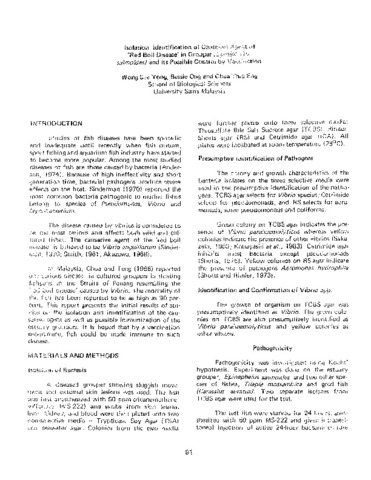Status of breeding and larval rearing of groupers
- Global styles
- MLA
- Vancouver
- Elsevier - Harvard
- APA
- Help
Share
Abstract
Attempts to breed groupers in captivity started about four decades ago. Ukawa et al. (1966) described the successful fertilization and embryonic development of the red grouper Epinephelus akaara. Fueled by the high market value of live groupers and the inconsistent supply of juveniles from the wild, research on broodstock development and seed production of grouper has been intensified since the1980s. Natural or induced spawning in groupers was reported in Epinephelus tauvina (Chen et al. 1977, Hussain and Higuchi, 1980), E. malabaricus (Ruangpanit et al. 1986), E. salmoides (Kungvankij et al. 1986), E. fuscoguttatus (Lim et al. 1990), E. suillus (=E. coioides) (Toledo et al. 1993), E. polyphekadion (Sugama, pers. com), and Cromileptes altivelis (Sugama and Ikenoue 1999). Despite these developments, hatchery production of groupers remains unreliable. This paper reviews the status of breeding and larval rearing of groupers. Much of the information presented derives from the research and development studies on E. coioides at the Aquaculture Department of the Southeast Asian Fisheries Development Center.
Suggested Citation
Toledo, J. D. (2002). Status of breeding and larval rearing of groupers. In Report of the Regional Workshop on Sustainable Seafarming and Grouper Aquaculture, Medan, Indonesia, 17-20 April 2000. Collaborative APEC Grouper Research and Development Network (FWG 01/99) (pp. 47-54). Bangkok, Thailand: Network of Aquaculture Centres in Asia-Pacific.
Type
Conference paperCollections
- Conference Proceedings [298]
Related items
Showing items related by title, author, creator and subject.
-
Development of a giant grouper Luteinizing Hormone (LH) Enzyme-Linked Immunosorbent Assay (ELISA) and its use towards understanding sexual development in grouper
Peter Dennis, Lachlan; Nocillado, Josephine; Palma, Peter ; Amagai, Takafumi; Soyano, Kiyoshi; Elizur, Abigail (Elsevier, 2020-07-13)
A recombinant giant grouper Luteinizing Hormone (LH) consisting of tethered beta and alpha subunits was produced in a yeast expression system. The giant grouper LH β-subunit was also produced and administered to rabbits ...
; Amagai, Takafumi; Soyano, Kiyoshi; Elizur, Abigail (Elsevier, 2020-07-13)
A recombinant giant grouper Luteinizing Hormone (LH) consisting of tethered beta and alpha subunits was produced in a yeast expression system. The giant grouper LH β-subunit was also produced and administered to rabbits ...
-
Isolation, identification of causative agent of "red boil disease" in grouper (Epinephelus salmoides) and its possible control by vaccination
Wong, See-Yong; Ong, Bessie; Chua, Thia-Eng (Aquaculture Department, Southeast Asian Fisheries Development Center; International Development Research Centre, 1979)This report presents the initial results of studies on the isolation and identification of the causative agent as well as possible immunization of the estuary groupers. It is hoped that by a vaccination programme, fish ... -
Grow-out culture of seabass, grouper and snapper in ponds
Coniza, Eliseo B.; Catacutan, Mae R. (Aquaculture Department, Southeast Asian Fisheries Development Center, 2009)





